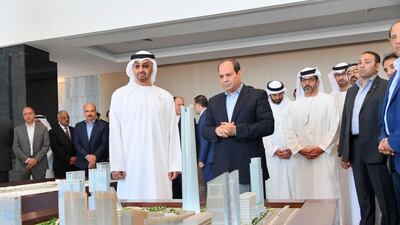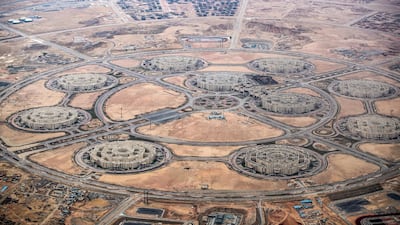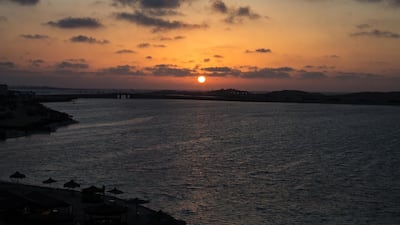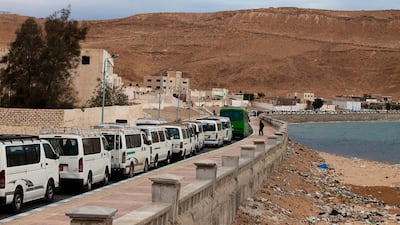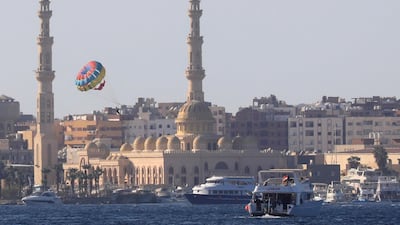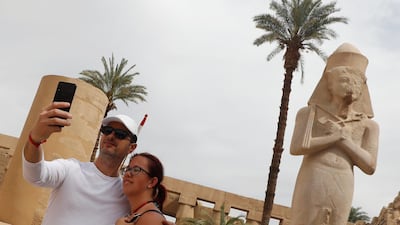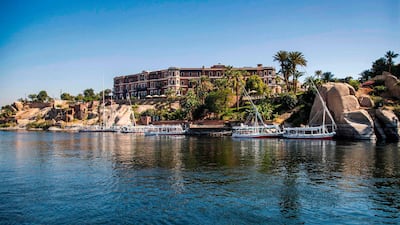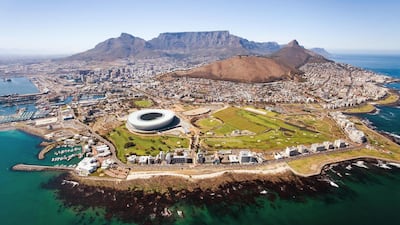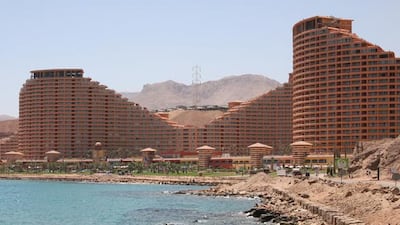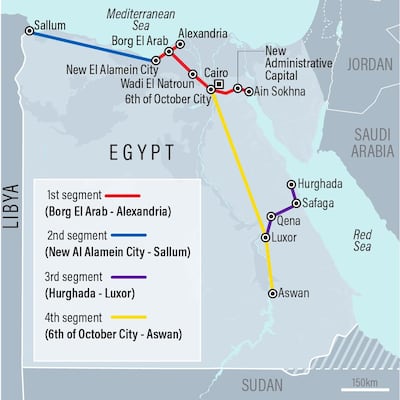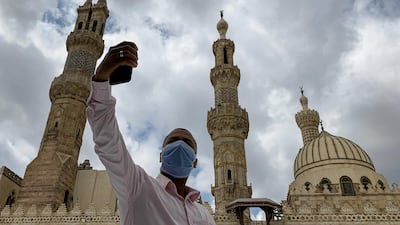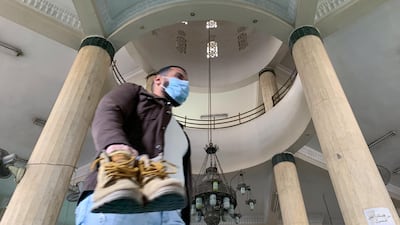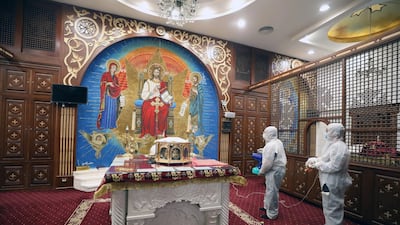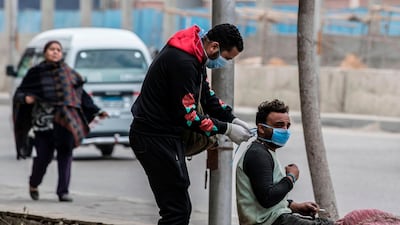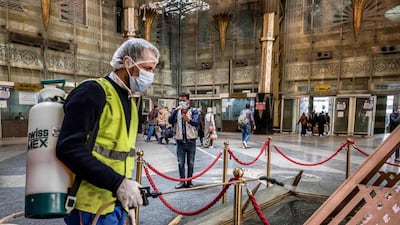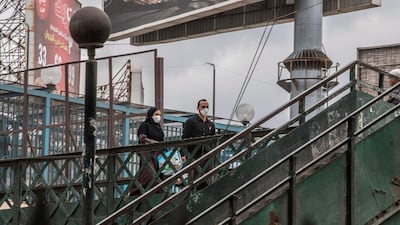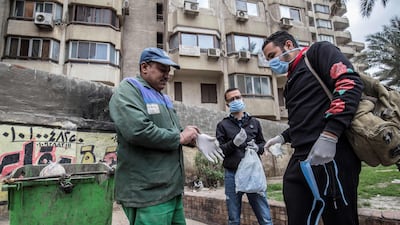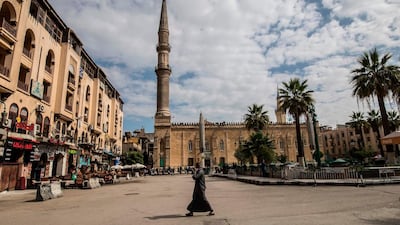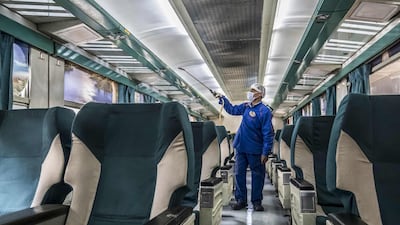Egypt will create thousands of jobs and spend billions of dollars on a revamp of its overcrowded rail system, the government announced this week.
In a speech to members of parliament, Minister of Transport Kamel Al Wazir outlined the ministry’s plans up to 2024, including upgrading roads, bridges and metro lines.
Plans to build new land ports, improve the Nile river transport system, and connecting Egypt with African neighbours through a road from Cairo to Cape Town were also detailed.
Improving the transport sector is key to achieving social and economic development, Mr Al Wazir told the House of Representatives.
A flagship project in the new transport strategy is a $23 billion high-speed electric rail line that in its first phase will run from the Red Sea to the Mediterranean. Egypt signed the deal for its construction with Siemens in January.
The new rail network will eventually comprise four lines covering 1,750 kilometres.
The first 460km route, which will be completed in two years at a cost of $8.2bn, starts from Ain Sokhna on the Red Sea’s Gulf of Suez and ends at New Alamein City on the Mediterranean.
Its 15 stations include the yet-to-be-inaugurated New Administrative Capital, Giza, 6 October City, Alexandria and Mersa Matrouh.
“Projects to connect the different coasts of Egypt are not new – at least in the last 10 years – but they’re constantly part of every new project, every new logistical remaking of the different port cities and different plans for urban development,” said Ingy Higazy, a PhD candidate in politics at the University of California Santa Cruz.
Ain Sokhna port is being upgraded at a cost of $1.27bn over two years. New Alamein City, one of the mega projects of the El Sisi government, was conceived as a centre for tourism, education and government.
It has its own presidential palace and ministry building, and construction is under way for universities, skyscrapers and hotels.
"The logic behind connecting those two spaces … is to attract trade and foreign investment to the Egyptian economy," Ms Higazy said. "The economic logic is emphasised more than the urban logic."
The 200km second line along the northern coast of the Mediterranean will run from El Alamein to Sallum, close to the Libyan border. Mr Al Wazir said this route will be important for the transport of goods to Libya and may be extended to Benghazi, either by road or rail.
The third line connects Hurghada and Safaga on the Red Sea with Qena and Luxor in Upper Egypt, key tourism destinations. The high-speed train, which goes up to 250kph, will cut the journey in half, to two hours.
The final line, 850km, will run north-south between 6 October City on the outskirts of Cairo and Luxor and Aswan. The four-hour trip will help to alleviate pressure on the overcrowded traditional train lines and has the potential to be extended to Sudan.
Siemens chief executive Joe Kaeser said in an interview with MBC Masr that the electric train project will create 15,000 job opportunities in the field of construction in its first phase and 2,000 permanent positions. Orascom Construction and Arab Contractors will also help design and build the rail network.
The goals of such infrastructure projects include easing traffic and enhancing quality of life, but mainly focus on increasing trade, boosting the economy, attracting foreign investment, creating jobs and helping tourism recover from the effects of the Covid-19 pandemic.
The transport sector projects tie in with Egypt Vision 2030, a national agenda launched five years ago with eight objectives that include a sustainable environment and a strong economy.
In an interview with Egyptian TV channel Sada Elbalad, Mr Al Wazir said the electric rail line project is long overdue. The Egyptian rail network began in 1865 with a Cairo-Alexandria line and then Cairo-Assiut to the south. By 1940, there were 9,500km of rail line, but the network has not expanded since.
With the explosion in population to 100 million and a lack of upgrades for dilapidated trains, the system is plagued by overcrowding and accidents. Between 2004 and 2016, an average of 1,041 train accidents occurred every year, according to the Central Agency for Public Mobilisation and Statistics.
Mr Al Wazir began his term in March 2019 with high expectations from the public because he was nominated by President Abdel Fattah El Sisi to replace Hisham Arafat, who resigned after a train crash that killed at least 22 and injured dozens.
Many trains run at 200 per cent capacity and out of 8,500 train cars, 2,500 are not working, Mr Al Wazir said. All trains would be upgraded or replaced by the end of this year, he said.
The high-speed electrical rail line will help to carry more passengers. Before 2011, 800,000 passengers a day rode Egypt’s trains. The goal is to reach 1.5 million passengers by 2024 and two million by 2030, Mr Al Wazir said.
"To achieve this, we need 15,000 kilometres of rail, minimum, instead of 10,000 kilometres," he said.
The decision to go electric will help to protect the environment and keep passengers safe, he said. He noted that Saudi Arabia and Morocco have had high-speed electric trains since 2018, and “it’s shameful” that Egypt has not done the same.

